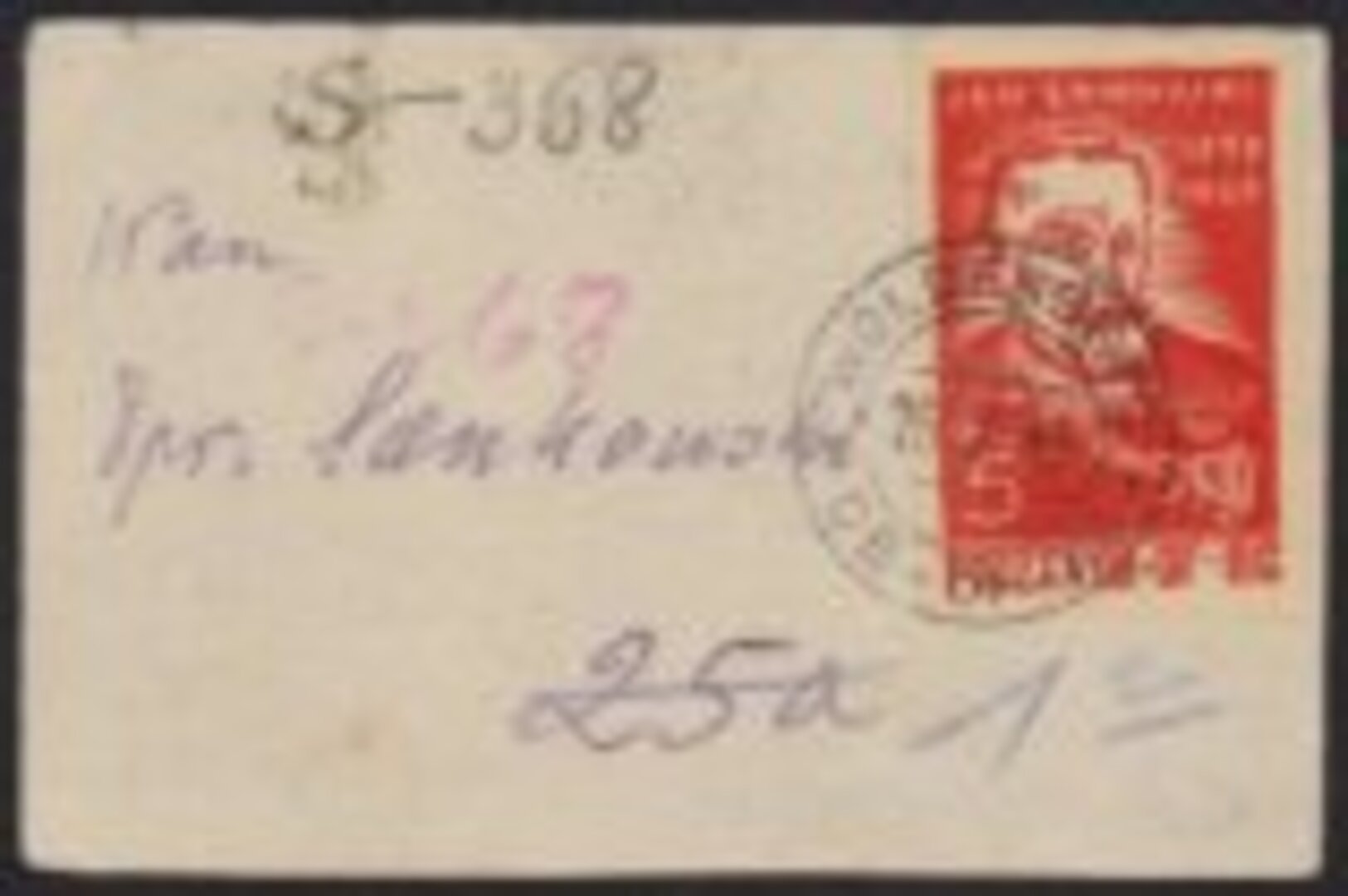The Germans captured many thousands of Polish officers during the conquest of Poland at the beginning of the Second World War in September 1939. They were interned in various Prisoners of War camps for officers called Offizierlagers (abbreviated to Oflags). Local camp posts operated within four of them – in Grossborn, Murnau, Neubrandenburg and Woldenberg. These camps were quite large and accommodated many thousands of prisoners and the camp posts provided a ready method for communication between prisoners.
These camp posts entirely ran by Polish prisoners were approved by the German authorities. They carried and distributed mail within the area of the camps, printed their own stamps and postal stationery and employed their own postmen. The Germans never found out one of the main purposes of the camp posts which was to raise funds for the orphans and widows of Polish soldiers. The camp posts maintained accounts for the Germans which showed salaries paid to the postmen but in reality they worked for free and the money was smuggled out of the camps.
The stamps and postal stationery were mostly printed from single carved wooden dies, in one instance copper plate die was used, in other linocuts were used – the only occasion of stamps being produced by this method. At the beginning the tools and methods of producing stamps were very crude, paper used came from various sources such as toilet rolls, cigarette paper or blank margins cut from newspapers, a nail was used to etch into wood taken from a kitchen stool, inks were any available oil paints, a silver coin or rubber heel were adapted to make cancellers, some stamps were rouletted by using cog wheels taken from watches, some were gummed using gum produced from potatoes or flowers. Only later Swedish YMCA and the Red Cross started to provide some proper materials.
All designs had to be approved by the German authorities but many stamps with patriotic designs commemorating various events from Polish history, the full meaning of which often was not understood by the Germans, were issued. Even a stamp design competition was once held.
OFLAG IIC Woldenberg
The camp at Woldenburg (now Dobiegniew in Poland) was established on 21 May 1940, was the largest one - housed over 7,500 prisoners in 50 barracks on an area of about 62 acres. The first stamps were issued on 4 April 1942. 43 different stamps, 5 mini-sheets and 6 postcards (in total approx. 750,000 postal items) were produced. The camp was closed on 25 January 1945 due to the approaching Red Army and the prisoners took part in the infamous Death March.
OFLAG IID Grossborn
The camp at Grossborn (now Borne Sulinowo in Poland) was established on 21 May 1940, housed almost 5,400 prisoners. The first postcard was issued on 3 December 1943, followed by the first stamp on 11 December. 30 different stamps, 8 mini-sheets and 16 postcards (in total approx. 200,000 postal items) were produced. The camp was closed on 28 January 1945 due to the approaching Red Army and the prisoners took part in the infamous Death March.
OFLAG IIE Neubrandenburg
The camp at Neubrandenburg (in Germany) or more precisely the camp for the Polish Officers (there were several POW’s camps around Neubrandenburg) was established in October 1940 and closed on 22 June 1944 after the prisoners were transferred to Grossborn. The first stamp was issued on 23 January 1944. In total 8 different stamps and 4 postcards were produced.
OFLAG VIIA Murnau
The camp at Murnau (Germany) was established on 25 September 1939, housed over 4,700 prisoners. The first stamps was issued on 6 November 1942. In total 23 different stamps and 7 postcards (in total approx. 29,000 postal items) were produced. The camp was liberated by the US army on 29 April 1945.


 General
General
 General
General
 General
General